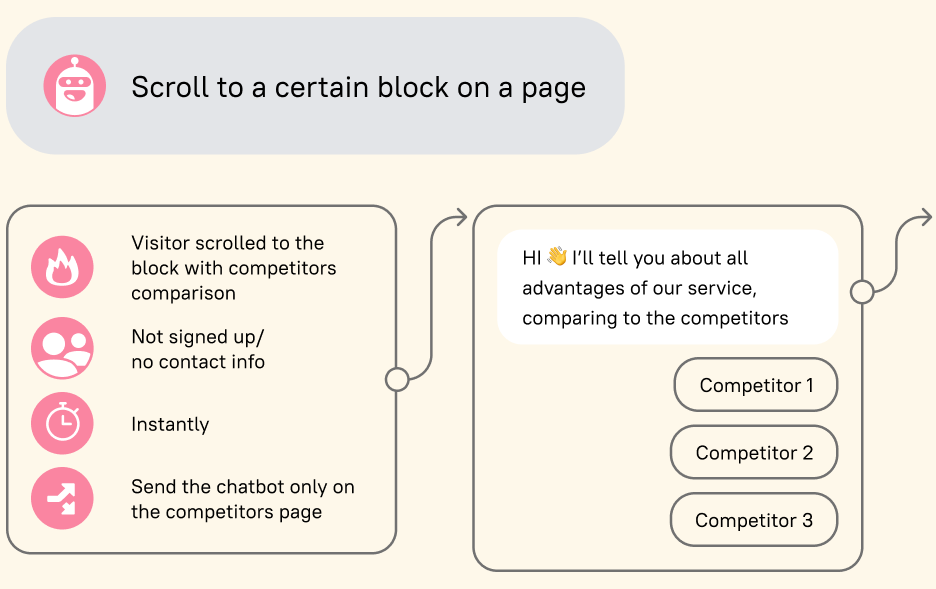Growth marketing vs Performance marketing: What to choose for your business?

Navigating the world of marketing strategies can be daunting, especially when it comes to deciding on a focused approach for your business. A common dilemma faced by many is the choice between growth marketing and performance marketing. If you’ve been wondering, “What is growth marketing vs performance marketing?” and which strategy would best boost your business, you’re in the right place.
In this article, we’ll dive deep into performance vs growth marketing, shedding light on their unique nuances and critical differences.
Our aim?
To help your business growth experts demystify these popular strategies, meet your unique business objectives, and ultimately drive your success. Get set for an insightful journey into the heart of modern marketing techniques!
What is a growth marketing
Growth marketing is an integrated approach aimed at every aspect of the customer journey. Unlike traditional marketing that typically focuses on the top of the funnel — getting customers in the door — growth marketing extends to the entire funnel, including fostering customer retention and loyalty.
Being a data-driven practice, it’s all about experimentation, discovering insights in a growth marketing analytics, learning, and iteration. Let’s lay it out on a simple table.
Growth Marketing Funnel:
- Awareness
- Acquisition
- Activation
- Retention
- Referral
- Revenue
The key takeaway in the performance marketing vs growth marketing debate is that while performance marketing focuses on quick, measurable outcomes (clicks, conversions), growth marketing takes a more comprehensive, long-term view of the customer led growth journey. Both strategies hold value and can be blended for a well-rounded marketing approach.
What is a performance marketing
Performance marketing is a digital marketing strategy where advertisers (businesses) only pay when a specific action is completed; these actions could be a lead, click, sale, or form submission. It’s all about achieving quantifiable results and maximizing the return on ad spend.
Performance Marketing Funnel:
- Targeting
- Acquisition
- Conversion
- Retargeting
- Optimization
When considering growth marketing vs performance marketing, remember that performance marketing is terrific for immediate, measurable results, and when you want a direct return on investment. While less encompassing than growth marketing, it’s incredibly focused and results-driven, and can compliment a growth marketing strategy well.
Growth and performance marketing goals and tasks
Growth marketing aims at influencing the entire customer journey, from the initial awareness stage to customer retention and advocacy. It’s about building meaningful customer relationships, fostering loyalty, and stimulating long-term growth.
Tasks include:
- analyzing customer behavior and feedback,
- running A/B tests for product improvements,
- creating referral programs,
- ensuring a seamless onboarding experience,
- and customer retention strategies.
For instance, a SaaS company might use growth marketing by focusing on improving their product’s user experience. After analyzing customer behavior and feedback, they discover that users find one specific feature confusing. So, they create two versions of this feature (A/B testing) and introduce them to a segment of users. Based on the results, they realize Version B decreases customer confusion and increases the feature usage significantly, improving overall customer satisfaction and retention.
Performance marketing is focused on achieving specific, quantifiable results, like generating leads, driving clicks, or converting sales. It’s all about being results-driven, with advertisers typically paying only when a specific action is completed.
Tasks for performance marketing include:
- setting up and monitoring pay-per-click campaigns,
- building relationships with relevant affiliates for affiliate marketing,
- optimizing conversion rates,
- and analyzing ad campaigns for continual improvement.
As an example, a SaaS company specializing in growth marketing tools might leverage performance marketing through a targeted pay-per-click (PPC) campaign. They set up a PPC campaign for specific search terms like “best growth marketing services”. Each time a potential customer clicks on their ad and signs up for a trial, the SaaS company pays a fee. This way, the company efficiently drives new leads, getting immediate, measurable outcomes.
In the battle of performance marketing vs growth marketing, a balanced blend may be the winning strategy, with each approach addressing differing needs and phases of the customer journey.

Get your free example of a growth marketing playbook with 40+ templates for successful experiments
Growth and performance marketing tactics
There’s a fascinating dynamic at play when you peek into growth vs performance marketing. These approaches are different sides of the same coin, with distinctly unique tactics but the same end game — driving business growth.
Growth marketing fuels the entire customer lifecycle — from the first interaction to loyal customer advocacy. This strategy involves engrossing experimentation, testing new ways to engage with potential customers and caring for established ones.
- A/B Testing: Create two versions of the same campaign or page and test them against each other to see which performs better.
- Content Marketing: Use blogs, articles, videos, podcasts, and more to engage your audience and provide them with beneficial information.
- Search Engine Optimization: Improve your website’s ranking in search engines to increase organic (unpaid) traffic.
- Social Media Marketing: Use social media platforms to reach out to potential customers, engage with them, and build a loyal follower base.
- Email Marketing: Use personalized, targeted emails to promote your products, services, or content.
- User Experience (UX) Optimization: Enhance your website or app’s interface to ensure that users have the best experience possible—improve the design, load time, and ease of use.
- Referral Programs: Create incentive programs for existing customers to refer your products or services to their contacts.
Read also: PLG Product Led Growth Marketing: a step-by-step guide to hacking product growth and top 10 product led growth software your competitors use in 2023
One example is a content strategy aimed at driving organic traffic. Let’s say your growth marketing team runs a fitness app. A blog with workout tips, nutrition advice, and motivational stories can attract fitness enthusiasts in the awareness stage. Meanwhile, a personalized email campaign can keep existing users engaged, offering new exercise suggestions or spotlighting success stories from other users. The tactics are focused on nurturing and expanding your relationship with customers at each stage. That’s growth marketing at play!
Performance marketing, on the other hand, has a more direct approach, demanding quantifiable results. The goal here is to attain immediate returns on advertising spend, drawing crystal clear lines from marketing efforts to results. The tactics are more inclined towards measurable actions like clicks, leads, or sales.
- Affiliate Marketing: Collaborate with external websites to promote your products or services in exchange for a commission on each click or purchase they generate.
- Pay-Per-Click (PPC) Marketing: Run ads on search engine results and pay a fee each time an ad is clicked.
- Social Media Ads: Use targeted ads on social media platforms to reach your potential customers.
- Influencer Marketing: Leverage influencers in your niche to endorse your products or services, getting access to their follower base.
- Retargeting Campaigns: Deploy strategies to re-engage users who’ve shown an interest in your products or services but haven’t taken action.
- Search Engine Marketing (SEM): Use paid strategies to increase your website’s visibility in search engine results pages.
- Conversion Rate Optimization (CRO): Use data-driven insights to improve your website, landing pages, or ads’ performance and increase conversions.
Taking the above example forward, suppose the fitness app company runs a pay-per-click (PPC) ad campaign on Google promoting a new yoga class series. They target the ad at individuals searching for “online yoga classes”. Each time a user clicks the ad and signs up for the class, the company pays a predefined fee. Thus, the success of the campaign can be directly measured in clicks and sign-ups — it’s transparent and immediate.
Growth and performance marketing metrics difference
When looking at performance marketing vs growth marketing, each method uses a different product metrics framework to measure its success. These key performance indicators (KPIs) serve as measurable values that demonstrate the effectiveness of the strategy in achieving key objectives.
Growth marketing is concerned with the overall lifecycle of a customer. Therefore, its metrics are designed to understand and improve this entire journey:
- Customer Acquisition Cost (CAC): Measures the cost of acquiring a new customer, considering all marketing and sales expenses.
- Customer Lifetime Value (CLV): Estimates the total value a customer contributes to your business over their entire relationship with your brand.
- Net Promoter Score (NPS): Measures customer experience and predicts business growth by gauging customer loyalty to a brand.
- Churn Rate: Reveals the percentage of users who stop using your product or service over a certain period.
- Retention Rate: Calculates the proportion of customers a company keeps over a particular period (inverse of churn rate).
- Engagement Rate: Measures the level of engagement that a piece of created content is receiving from an audience.
Read also: How to use growth loops for your business success strategy
Performance marketing, on the other hand, focuses primarily on immediate, tangible results, mainly transactions or actions. Here are some fundamental metrics:
- Click-Through Rate (CTR): Represents the number of users who click on a specific link compared to the total number of users who viewed it (an ad, an email, or a webpage).
- Conversion Rate (CR): Indicates the percentage of users who perform the desired action (like making a purchase, filling out a form, or signing up for a newsletter).
- Cost Per Action (CPA): Reflects the cost associated with a specific action being performed, such as cost per lead or cost per sale.
- Return on Ad Spend (ROAS): Quantifies the revenue earned per dollar spent on advertising.
- Leads Generated: Quantifies the number of new leads resulting from a campaign or wider strategy.
In the performance vs growth marketing showdown, understanding these metrics and knowing when and how to utilize them can greatly enhance your marketing efforts by providing valuable insights about the effectiveness of your strategies.
Read also: Your Growth Marketing Strategy Template with guide and examples
How to define which is right for you?
Choosing between growth marketing and performance marketing — or deciding on an optimal mix — largely depends on your business goals, budget, timeline, and specific market scenario.
If you are primarily focused on immediate, measurable results, like acquiring more leads, boosting sales directly, or driving traffic, then performance marketing might be your go-to choice. This approach emphasizes short-term, tangible actions, allowing businesses to easily measure the return on ad spend.
On the other hand, if your aim is holistic, sustainable business growth and fostering long-term customer relationships, growth marketing is likely a better fit. It encompasses the entire customer lifecycle, working to not just acquire customers, but to retain and generate revenue from them over time.
Organizations often employ a mix of both. A new startup might initially lean into performance marketing to gain traffic and make the first sales, gradually ramping up growth marketing efforts to build a loyal customer base and maximize lifetime value.
To sum it up, let’s present the key characteristics of both in a comparison table:
Growth Marketing
Performance Marketing
Goals
Need-oriented; focuses on user engagement and brand loyalty
Goal-oriented; focuses on short-term actions such as clicks, leads, or sales
Timeline
Long-term; often ongoing
Short-term; often campaign-based
Focus
Entire customer lifecycle, from acquisition to retention
Immediate, measurable results based on action
Usability
Ideal for businesses looking for long-term growth and customer loyalty
Ideal for businesses seeking immediate returns
Metrics
Churn rate, customer lifetime value, Net Promoter Score (NPS)
Click-through rate, conversion rate, cost per action, return on ad spend (ROAS)
So, when it comes to performance vs growth marketing, the right approach truly depends on your business’s individual needs, goals, and context. Taking time to understand these can guide you on the best path.
Free expert insights to boost your marketing strategy and raise conversion to a target action by 10%

FAQ
1. What is growth marketing?
Growth marketing is a comprehensive, data-driven strategy focusing on the full marketing funnel — from customer acquisition and lead generation to retention and user engagement. It leverages creative and experimental tactics to stimulate business growth and maximize the customer lifetime value.
2. What is performance marketing?
Performance marketing is a subspecialty of marketing where advertisers pay marketing companies only when specific actions are completed, such as:
- lead generation,
- click,
- sale,
- or other predefined metrics.
It’s mainly focused on achieving quantifiable customer actions and delivering a high return on investment (ROI).
3. How does growth marketing differ from performance marketing?
While both are results-oriented, growth marketing has a broader focus.
- Growth marketing not only involves customer acquisition, like performance marketing, but also pays attention to user engagement, retention, and brand loyalty.
- Performance marketing, on the other hand, is transactional and most concerned with delivering immediate results based on predefined actions.
4. Can growth marketing and performance marketing be used together?
Yes, many businesses use both for optimal results. While performance marketing drives immediate ROI via specific customer actions, growth marketing works long-term to engage and retain customers, ensuring a higher customer lifetime value.
5. Which is more cost-effective, growth marketing or performance marketing?
Cost-effectiveness can depend on the campaign’s goals and duration. Performance marketing provides more immediate ROI and can therefore be more cost-effective for short-term campaigns. Growth marketing may require a larger initial investment, but its focus on customer retention and lifetime value can yield a higher ROI over time.
6. Which is best for my business, growth marketing or performance marketing?
The choice between growth marketing and performance marketing depends on your business goals. If you want immediate results based on specific actions, performance marketing might be the better choice.
However, if you’re focusing on the entire customer lifecycle — acquisition, retention, and upselling — growth marketing would be most beneficial. Ultimately, many businesses find that a balanced mix of both strategies works best.
Read also:
- 25 Growth Marketing Books to Skyrocket Success
- 22 SaaS growth hack Facebook tactics to boost your business
- Skyrocket your company revenue with a complete guide to RevOps Revenue Operations
- RevOps vs Sales Ops: know the difference
- B2B growth marketing: accelerating business success
- Demand Generation vs Growth Marketing: Where to focus?
- Growth marketing newsletter: 18 expert digests for regular insights
- Growth marketing case studies: 12 stories with detailed tactics and numbers achieved
- RevOps best practices: 13 tactics to implement this year
- 10 product led growth companies that boost their development right now
- Growth marketing framework: Battle-tested insights from Dashly experts



![The ultimate guide to growth marketing in 2023 [explained by a growth hacker]](https://www.dashly.io/blog/wp-content/uploads/2023/04/The-ultimate-guide-to-growth-marketing-explained-by-a-growth-hacker-720x317.png)
